

 True or not true?
True or not true?
You can find tons of information about wine on the Internet. Who look things up in books nowadays? (Actually, as we write wine books, we hope that many do!) It is practical to be able to find everything quickly and smoothly in your computer or phone, but it is also dangerous. It is dangerous if you do not read with discernment. Anyone can write on the internet and that is a good thing. As long as you don’t swallow everything, hook, line, and sinker…
Much that is written about wine on the Internet is so totally wrong that you hardly believe your eyes. Of course it is not always easy to know what is right and what is wrong. But don’t trust the first thing you read. We have lately read some strange things on, for example, organic and biodynamic wines, wood ageing, fermentation and yeast, clones and grape varieties and quite a few other things.
Read what many people write about the same subject. Read wisely! If it doesn’t sound credible, chances are it is not. If you read carefully you can get a feel for if the person knows what he/she is talking about. If the writing is muddle-headed, maybe the writer hasn’t understood the subject.
Sometimes a book can actually be a good thing. For a book the author often (but perhaps not always…) makes extensive research to be sure that everything in the book is correct. On the Internet, people write fast and sometimes sloppy. The author of a book makes an effort to be as accurate as possible because a book will be around for a long time. But maybe what’s on Internet will be around even longer.
Caveat emptor.
Britt & Per
PS: Recommend to your friends to read the Brief !
– – – – –
What’s on at BKWine Tours
- Champagne, September 14-18
- Bordeaux, September 28 – October 2
- Douro Valley, October 12-16
- Chile and Argentina in South America, January 28 – February 12, 2017
- South Africa, February 24 – March 7, 2017
For more information please contact us on email or on phone (we’re on French time), or go to our wine travel site on www.bkwinetours.com!
We also make custom designed wine tours – on-demand tours for you and a group of friends, for your company (maybe to scout new winegrowers?), for a special event… We can combine winery visits and wine touring with other activities: gastronomic workshops, visit to an oyster farm, truffles hunting, cheese making, and more. More info on the custom designed and bespoke BKWine wine tours and travel here!
From the World of Wine
In Brief
In short, news and stuff from the world of wine.
Is the world heading for a wine shortage?
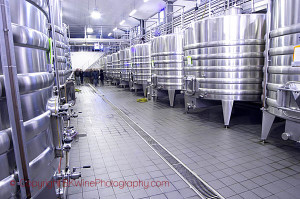 So far there has never been any shortage of wine in the world. Rather the opposite. For a long time there was a large surplus but since some years back this surplus is gone. Now the world makes about as much wine as it drinks. But this year the issue has become topical. The start of the harvest in Europe is just over a month away. We already know that it will be smaller than normal in many places because of the bad weather during the spring and early summer. First estimates show that the French harvest this year will be 44 million hectolitres, 8% down from 2015.
So far there has never been any shortage of wine in the world. Rather the opposite. For a long time there was a large surplus but since some years back this surplus is gone. Now the world makes about as much wine as it drinks. But this year the issue has become topical. The start of the harvest in Europe is just over a month away. We already know that it will be smaller than normal in many places because of the bad weather during the spring and early summer. First estimates show that the French harvest this year will be 44 million hectolitres, 8% down from 2015.
In the Southern hemisphere, however, the grapes are already safely inside the tanks and barrels. Also here the harvest has been unusually small in some countries. Argentina fell by 30% compared to 2015 due to the ravages of El Niño. In Chile El Niño caused violent rain storms in the spring. The result was 25% down compared to 2015. South Africa fared better with a decrease of 7%, and Australia and New Zealand both show an increase. Honestly I do not think there will be any shortage of wine. But the violent forces of the weather affect many wine producers hard. Read more on vitisphere.com.
500,000 views on BKWine TV
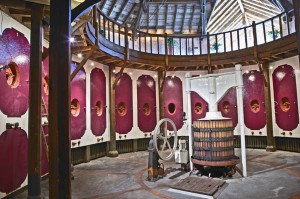 ”BKWine TV” is our video channel on Youtube. Lately we have not been very good at publishing new video material. It takes a lot of time to edit videos so have not quite been able to keep up with all the raw material that we have (any video editing volunteers?). But every once in a while we do publish new videos. We will try and improve. We have a huge pile of clips to work with from our travel and tours, all our meetings with winemakers and visits to vineyards. Recently we passed 500 000 views on the channel. Half a million people (!) have watched some or several of our clips. Great! Go check out what we have on BKWine’s Youtube channel here. BKWine on YouTube For example a flight from Milan to Paris with the Eiffel Tower from above. The winemaker at Oldenburg talking about his wines. How to degorge a bottle of cava. And much more.
”BKWine TV” is our video channel on Youtube. Lately we have not been very good at publishing new video material. It takes a lot of time to edit videos so have not quite been able to keep up with all the raw material that we have (any video editing volunteers?). But every once in a while we do publish new videos. We will try and improve. We have a huge pile of clips to work with from our travel and tours, all our meetings with winemakers and visits to vineyards. Recently we passed 500 000 views on the channel. Half a million people (!) have watched some or several of our clips. Great! Go check out what we have on BKWine’s Youtube channel here. BKWine on YouTube For example a flight from Milan to Paris with the Eiffel Tower from above. The winemaker at Oldenburg talking about his wines. How to degorge a bottle of cava. And much more.
Who sells wine in Denmark?
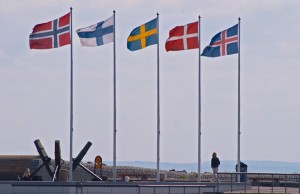 It is not only in Sweden that the Italian wines are popular. Also in Denmark, Italy is the largest wine country with a market share of 21.5%. Chile is in second place with 13.3%, closely followed by Spain, France and South Africa. In sixth place is Australia with 6.8%. In Denmark, the supermarket chains have a very strong position in the wine market. Three of them, Coop, Dansk Supermarked and Dagrofa, together have just over 80% of sales. But the wine supply in Denmark is still very varied. In Denmark they have the highest number of wine importers per inhabitant!
It is not only in Sweden that the Italian wines are popular. Also in Denmark, Italy is the largest wine country with a market share of 21.5%. Chile is in second place with 13.3%, closely followed by Spain, France and South Africa. In sixth place is Australia with 6.8%. In Denmark, the supermarket chains have a very strong position in the wine market. Three of them, Coop, Dansk Supermarked and Dagrofa, together have just over 80% of sales. But the wine supply in Denmark is still very varied. In Denmark they have the highest number of wine importers per inhabitant!
Coop sells its wines in stores like Kvickly, SuperBrugsen, Dagli’Brugsen and Irma. Dansk Supermarked sell theirs in Netto, Føtex and Bilka. Dagrofa tempts the customers with wines at Spar, Min Købmand Let-Køb and Kiwi.
Read more about Denmark’s wine trade here meininger.de.
The favourite grape in Napa is Cabernet Sauvignon
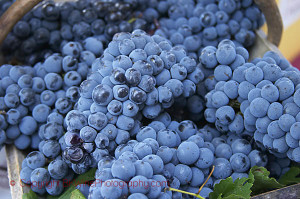 In Napa Valley they like Cabernet Sauvignon. The grape accounts for 40% of the Napa grape surface and 60% of the value of its wines. Now, says Chris Carpenter, cabernet specialist and winemaker, this dependence on Cabernet Sauvignon can be dangerous. Napa would be hit hard if a disease or a virus that affects that particular grape show up in the region. Moreover, he does not necessarily believe that Cabernet is the best grape for the warm climate in Napa Valley.
In Napa Valley they like Cabernet Sauvignon. The grape accounts for 40% of the Napa grape surface and 60% of the value of its wines. Now, says Chris Carpenter, cabernet specialist and winemaker, this dependence on Cabernet Sauvignon can be dangerous. Napa would be hit hard if a disease or a virus that affects that particular grape show up in the region. Moreover, he does not necessarily believe that Cabernet is the best grape for the warm climate in Napa Valley.
He encourages growers to invest in classic California grapes instead, like Petite Sirah, Zinfandel and Charbono. The first two we know about, but Charbono? This is obviously the French Savoie grape Corbeau, also called Douce Noire. It has spread not only in California but also to Mendoza in Argentina, where it is called Bonarda and is very popular. In France, however, it has all but disappeared. Read more: thedrinksbusiness.com.
Oldenburg Vineyards Syrah 2013, Stellenbosch | Britt’s Wine of the Month 1
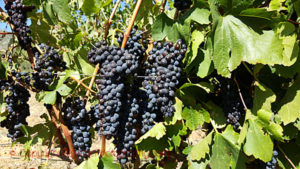 South Africa has a number of exciting and delicious wines. We go there once a year and we have our favourite wine estates that we return to every year. But we always make new discoveries as well. One discovery from this year’s trip in February was the Oldenburg Vineyards. The visit was very memorable. This was, of course, thanks in part to the high quality wines but also the amazing hilly landscape surrounding the winery.
South Africa has a number of exciting and delicious wines. We go there once a year and we have our favourite wine estates that we return to every year. But we always make new discoveries as well. One discovery from this year’s trip in February was the Oldenburg Vineyards. The visit was very memorable. This was, of course, thanks in part to the high quality wines but also the amazing hilly landscape surrounding the winery.
The current owner Adrian Vanderspuy bought Oldenburg in 2003 and did a complete renovation. Now, they use only their own grapes, yields are kept low, irrigation is done only if it is necessary. “We are often in the vineyard so we notice the needs of the vines,” says winemaker Philip Constadius. “Drought is always an issue in summer but we have a cool terroir here, without excessive heat.”
South Africa is somewhere between the old and the new world, says Philip. And it shows in this beautiful Syrah wine that has a certain French style character but with a very generous fruit. There is hints of black pepper and the oak flavours are discreet. Serve with tasty meat dishes or strong cheeses. Approx. 14 euros. More info oldenburgvineyards.com
Join us on our South Africa wine tour at the end of February!
Prestige “Barbaresco” will be Barbaresco once more
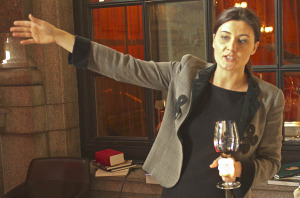 Angelo Gaja’s children obviously do not agree with their father’s decision to sell the estate’s three single vineyard Barbaresco – Costa Russi, Sori Tildin and Sori San Lorenzo – as DOC Langhe instead of DOCG Barbaresco. Angelo Gaja starting doing this in 1996, possibly because he wanted to include some Barbera in the wines. Something which of course would be unthinkable (and illegal) for a Barbaresco.
Angelo Gaja’s children obviously do not agree with their father’s decision to sell the estate’s three single vineyard Barbaresco – Costa Russi, Sori Tildin and Sori San Lorenzo – as DOC Langhe instead of DOCG Barbaresco. Angelo Gaja starting doing this in 1996, possibly because he wanted to include some Barbera in the wines. Something which of course would be unthinkable (and illegal) for a Barbaresco.
Now the Gaja children are going to return to the Barbaresco appellation for these prestigious wines starting with the 2013 vintage. The wines will again be 100% Nebbiolo. If they ever were anything else. Read more on decanter.com.
Veneto, wine champion in Italy
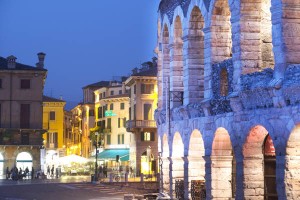 Vineyards are everywhere in Italy. The vineyard surface is as large as France – around 800 000 hectares – but the country is very much smaller. In contrast to France, Italy have vineyards in all its regions. Since quite some time now, the largest wine production region is Veneto in the northeast part of the country. It produces around 9 million hectolitres of wine. Of this 2.2 million is DOP Prosecco. This makes it the largest DOP in Italy. The Prosecco grape Glera has increased by almost 60% since 2000. Now it is grown on 19,500 hectares.
Vineyards are everywhere in Italy. The vineyard surface is as large as France – around 800 000 hectares – but the country is very much smaller. In contrast to France, Italy have vineyards in all its regions. Since quite some time now, the largest wine production region is Veneto in the northeast part of the country. It produces around 9 million hectolitres of wine. Of this 2.2 million is DOP Prosecco. This makes it the largest DOP in Italy. The Prosecco grape Glera has increased by almost 60% since 2000. Now it is grown on 19,500 hectares.
Conegliano Valdobbiadene DOCG is a separate appellation in Veneto making Prosecco, with a production of 588 000 hectolitres. Soave has Veneto’s – and Italy’s – largest production of white, still appellation wines (489,500 hectolitres). The world-famous red wines of Veneto has a somewhat smaller production: Valpolicella with around 165 000 hl, Valpolicella Ripasso, around 170 000 hl and Amarone della Valpolicella, around 100 000 hl. And we must not forget the reds from Bardolino and the delicious sweet Recioto wines. With this large variety of wines, it is not difficult to have a dinner with only wines from Veneto!
Chateau de Gaudou 2012 Renaissance, Cahors | Britt’s Wine of the Month 2
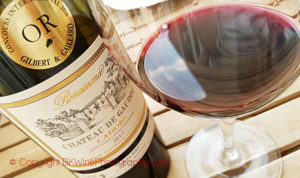 The winemaker Fabrice Durou took over the family estate in 2000. The family’s Cahors wines were then known as powerful wines for laying in you cellar. Wines that you should rather not touch the first years of their life. But Fabrice realized that today’s consumers do not want to wait 10-15 years for their wines. He realized that the secret lies in making wines that can be drunk early, but that can also be aged. This is now the estate’s hallmark. The wines are a little less extracted, often a little less oaked. But without losing the fine Cahors fruit that comes from the grape malbec.
The winemaker Fabrice Durou took over the family estate in 2000. The family’s Cahors wines were then known as powerful wines for laying in you cellar. Wines that you should rather not touch the first years of their life. But Fabrice realized that today’s consumers do not want to wait 10-15 years for their wines. He realized that the secret lies in making wines that can be drunk early, but that can also be aged. This is now the estate’s hallmark. The wines are a little less extracted, often a little less oaked. But without losing the fine Cahors fruit that comes from the grape malbec.
This wine is the wineries prestige cuvée made with 100% Malbec. This is a true Cahors that has not made too many concessions to the modern consumer. It is a good, powerful and rich wine. A typical Malbec with lots of dark berries. A good acidity gives freshness. It is excellent to drink now, the tannins are quite soft, but can age without problems for many years. If you drink it today, serve it with for instance duck breast or game. Something with a lot of taste. Approx. 15 euros. More info chateaudegaudou.com
Smoke gets in your wine?
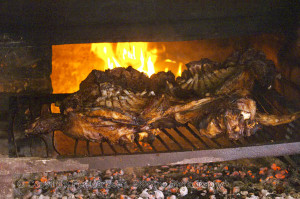 Fires break out now and then in the immediate vicinity of vineyards. It can be violent fires that go on for days, or even weeks. Although the vines may not be affected directly by the fire, will the smoke have an impact on the finished wine? Yes, it is very likely, according to an article in Wines & Vines about a fire in Monterey County in California that raged in July. Winegrowers there know what this is all about. It has happened before.
Fires break out now and then in the immediate vicinity of vineyards. It can be violent fires that go on for days, or even weeks. Although the vines may not be affected directly by the fire, will the smoke have an impact on the finished wine? Yes, it is very likely, according to an article in Wines & Vines about a fire in Monterey County in California that raged in July. Winegrowers there know what this is all about. It has happened before.
The grapes, they say, absorb the smoky flavours. The technology exists to test the grapes to see if they have become smoke tainted before harvesting. The smoke will above all be in the skin so a short skin contact is recommended during vinification. Moreover, says Matt Shea, vineyard manager at Bernardus Winery in Carmel, there are yeasts that have the ability to extract less of the smoky aromas. Read more about smoke tainted vineyards here: winesandvines.com.
Safari in South Africa – an extraordinary extension to the wine tour in South Africa
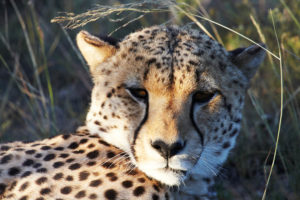 We have recently finalised all the details for the exceptional “extension module” for the South Africa wine tour. After the wine tour we offer you a four-day trip to private game reserves in the Eastern Cape, one hour flight from Cape Town to Port Elizabeth. The reserves are malaria-free. You will have several exciting game drives, including one in the Addo Elephant National Park. Here they have not only elephants but also the Cape buffalo, the endangered black rhino and a variety of antelope species.
We have recently finalised all the details for the exceptional “extension module” for the South Africa wine tour. After the wine tour we offer you a four-day trip to private game reserves in the Eastern Cape, one hour flight from Cape Town to Port Elizabeth. The reserves are malaria-free. You will have several exciting game drives, including one in the Addo Elephant National Park. Here they have not only elephants but also the Cape buffalo, the endangered black rhino and a variety of antelope species.
At the Amakhala Game Reserve they have taken a unique wildlife management initiative to reintroduce the animals to the areas where they once roamed freely. There will also be a boat ride up the Kariega River where the birdlife is incredible, you will do walk with cheetahs and much more. We can promise you four intense, instructive and very exciting days on the safari and wildlife extension to the South Africa wine tour.
You will also have the possibility to choose a few additional days of golfing, before the wine tour. More details will come soon.
Features
Features that we have published during the past month, with lots of reading for you.
Slow Wine from Piedmont: Cantalupo, Icardi, Mossio
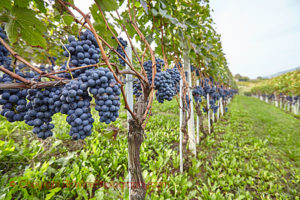 Cantalupo, Icardi, Mossio, three producers that were presented when Slow Wine, the wine part of the Slow Food movement, came to Sweden. Slow Wine wants to bring forward some of Italy’s best wine producers and help them to spread the fame of Italian wines worldwide.
Cantalupo, Icardi, Mossio, three producers that were presented when Slow Wine, the wine part of the Slow Food movement, came to Sweden. Slow Wine wants to bring forward some of Italy’s best wine producers and help them to spread the fame of Italian wines worldwide.
BKWine’s reporter Tobias Karlsson reports on some of the most interesting wines from the tasting on BKWine Magazine: Slow Wine from Piedmont: Cantalupo, Icardi, Mossio.
Top wines from the Rhone Valley: Chateauneuf-du-Pape | Britt on Forbes
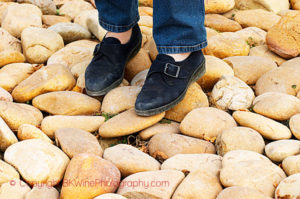 Châteauneuf-du-Pape is the most famous wine in the southern Rhône Valley. Here, in one of the hottest wine regions in France, you get wines with wonderfully warm and spicy aromas such as cinnamon, cloves and freshly roasted coffee. The large, round stones – galets roulés – which are characteristic of the area, have the ability to catch the heat from the sun during the day and keep the vines warm late into the night.
Châteauneuf-du-Pape is the most famous wine in the southern Rhône Valley. Here, in one of the hottest wine regions in France, you get wines with wonderfully warm and spicy aromas such as cinnamon, cloves and freshly roasted coffee. The large, round stones – galets roulés – which are characteristic of the area, have the ability to catch the heat from the sun during the day and keep the vines warm late into the night.
Today you can find lots of high quality wines in the neighbouring villages, for instance in Gigondas and Vacqueyras. But Châteauneuf-du-Pape has been famous for many hundreds years so it will take some time for the others to catch up, at least when it comes to stardom.
Read more on Britt’s article, originally published on Forbes, on BKWine Magazine: Châteauneuf-du-Pape: Rich and Spicy Wines With a Rich Historical Heritage.
A study in elegance: Palmer Blanc de Blancs Champagne, 2011 back to 1985
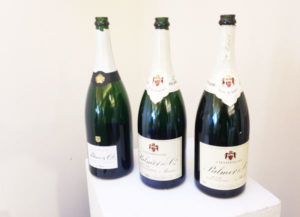 On May 30 the champagne house Palmer & Co. (and Oenoforos) launched Palmer Blanc de Blancs 2011. This was done in conjunction with a vernissage and tasting, which they called “The Art of Elegance”. They had invited a number of artists to make a small art installation around their Blanc de Blancs 2011, which was shown at the launch. In the same room we were then given the opportunity to taste a number of other editions with ten years between each. It was blanc de blancs in magnum bottles of the 2005, 1995 and 1985 vintages. Next, we tasted 2011.
On May 30 the champagne house Palmer & Co. (and Oenoforos) launched Palmer Blanc de Blancs 2011. This was done in conjunction with a vernissage and tasting, which they called “The Art of Elegance”. They had invited a number of artists to make a small art installation around their Blanc de Blancs 2011, which was shown at the launch. In the same room we were then given the opportunity to taste a number of other editions with ten years between each. It was blanc de blancs in magnum bottles of the 2005, 1995 and 1985 vintages. Next, we tasted 2011.
Read the rest of Lennart Stengård’s article on BKWine Magazine: A study in elegance: Palmer Blanc de Blancs Champagne, 2011 back to 1985.
Can organic wine production continue to grow? | Britt on Forbes
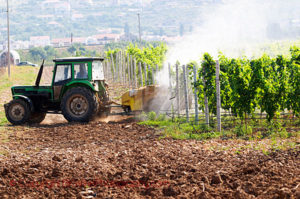 Organic viticulture has seen some astonishing growth. Today almost 10% of world wine production is estimated to be organic. A year like 2016 with very difficult weather conditions in many parts of Europe, that still accounts for the majority of the world’s wine, the growth in organics will no doubt be dampened. Bad weather is the biggest challenge to organic wine production. And indeed, some producers challenge the concept of organic wine production and instead favour other viticultural practices, that they consider to be even better for the environment. So what are the prospects for organic wine production to continue growing?
Organic viticulture has seen some astonishing growth. Today almost 10% of world wine production is estimated to be organic. A year like 2016 with very difficult weather conditions in many parts of Europe, that still accounts for the majority of the world’s wine, the growth in organics will no doubt be dampened. Bad weather is the biggest challenge to organic wine production. And indeed, some producers challenge the concept of organic wine production and instead favour other viticultural practices, that they consider to be even better for the environment. So what are the prospects for organic wine production to continue growing?
Read more Britt’s article on organic wines in her article originally published on Forbes on BKWine Magazine: Is Organic Viticulture [on a Large Scale] Really Possible?
Less pesticides? New, environmentally friendly treatment of mildiou
Whether you are organic or not, you have to spray against fungal diseases like downy mildew and powdery mildew. The organic growers use copper and sulphur and the conventional growers use synthetic chemical pesticides. To reduce the use of all these products would be a blessing for both the vineyards and the people that are spraying. Therefore, it is exciting every time a company is launching an environmentally friendly product. This time it is Syngenta France that in July presented its COS-OGA. This is an active substance composed of a mixture of oligosaccharides from shellfish shells and pectin from apples and citrus fruit.
Read more on these potentially revolutionary treatments in Britt’s article on BKWine Magazine: Less pesticides? New, environmentally friendly treatment of mildiou.
Wine tours
Here is some information about current and future wine tours with BKWine.
Beautiful châteaux, great wines = Wine tour to Bordeaux
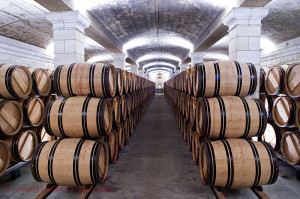 You never forget the chateaux of Bordeaux. They are fabulous, sometimes like something out of a fairy tale. It is incredible that a wine region can have such a collection of chateaux. You can go to Bordeaux just to look at these chateaux. But that would be a shame. The wines are also fabulous, albeit sometimes a bit too expensive. But that is a good reason to go on a wine tour to Bordeaux. You get to drink wines that you might not otherwise drink. You will get this luxurious feeling when you have lunch inside the chateaux. And drink fine wines, sometimes even older vintages.
You never forget the chateaux of Bordeaux. They are fabulous, sometimes like something out of a fairy tale. It is incredible that a wine region can have such a collection of chateaux. You can go to Bordeaux just to look at these chateaux. But that would be a shame. The wines are also fabulous, albeit sometimes a bit too expensive. But that is a good reason to go on a wine tour to Bordeaux. You get to drink wines that you might not otherwise drink. You will get this luxurious feeling when you have lunch inside the chateaux. And drink fine wines, sometimes even older vintages.
We will see all sides of Bordeaux on this trip. The large amazing chateaux but also the smaller and less prestigious ones but equally quality-conscious. The wine tour to Bordeaux will take place in late September.
(And if by any chance you happen to read Swedish you can read our new book on the wines of Bordeaux as preparation or inspiration.)
Spectacular river: wine tour along the winding Douro Valley
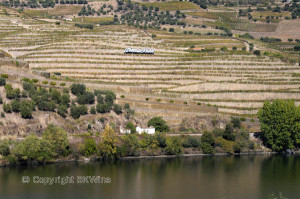 The wine world is full of famous rivers: the Loire, the Rhône, the Moselle, the Rhine … But we think the Douro river is the most magnificent of all the world’s wine rivers. The Douro Valley is a spectacular landscape with steep slopes and laboriously terraced vineyards. It is a wild landscape that has been domesticated by humans during hundreds of years.
The wine world is full of famous rivers: the Loire, the Rhône, the Moselle, the Rhine … But we think the Douro river is the most magnificent of all the world’s wine rivers. The Douro Valley is a spectacular landscape with steep slopes and laboriously terraced vineyards. It is a wild landscape that has been domesticated by humans during hundreds of years.
The Douro River was earlier also called the Port wine river. But today, not only port wine is made here. The Douro wines are non-fortified red and white wines. Often of very high class. On the tour we will get to know these wines as well as the port wines. Port may seem old fashioned to many consumers today, but it is actually a very exciting wine that we drink too rarely.
Portuguese cuisine is not so well known. We will get to taste the good traditional food but one dinner is planned at Portugal’s best gourmet restaurant. Located on the Douro River. A highlight of the tour! The wine tour to the Douro Valley takes place in October.
Wine, food and spectacular landscapes of Argentina and Chile
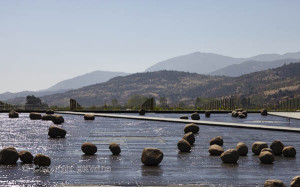 A trip you never forget is the one to Chile and Argentina. We will start with the big city of Buenos Aires and end in Santiago de Chile. In between, we will see a great tango show, visit wineries in Mendoza, experience an unique bus trip across the magnificent Andes, cross Chile to the Pacific Coast, visit Valparaiso and Vina del Mar, meet with winemakers in the Casablanca Valley, San Antonio, Colchagua and Cachapoal. And more. This is our longest wine tour, 15 days, and you never want it to end.
A trip you never forget is the one to Chile and Argentina. We will start with the big city of Buenos Aires and end in Santiago de Chile. In between, we will see a great tango show, visit wineries in Mendoza, experience an unique bus trip across the magnificent Andes, cross Chile to the Pacific Coast, visit Valparaiso and Vina del Mar, meet with winemakers in the Casablanca Valley, San Antonio, Colchagua and Cachapoal. And more. This is our longest wine tour, 15 days, and you never want it to end.
The lunches are often an asado, the South American barbecue. Sometimes with a tasty beef, or chicken or fish or shrimp … and vegetables, of course. In Santa Cruz we often enjoy a pisco sour by the pool when we relax after the day’s tastings. The wine tour to South America with Chile and Argentina begins in late January.
(Don’t wait too long to book if you are interested, places are being booked fast on this trip.)
South African wines, a success story worth a voyage
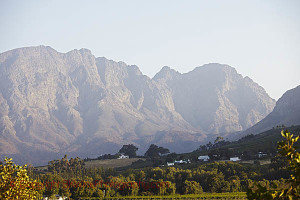 It is only 20 years since we started drinking South African wines. But now we take them for granted. The quality of the cheap wines is reliable. And the more ambitious wines become more and more interesting. This we have noticed since coming here for the first time in 2010. More and more producers are making in exciting wines that are definitely not streamlined. We will visit several of these on our trip. The harvest has just begun but the weather is still summer warm. A perfect time to go on a wine tour to South Africa.
It is only 20 years since we started drinking South African wines. But now we take them for granted. The quality of the cheap wines is reliable. And the more ambitious wines become more and more interesting. This we have noticed since coming here for the first time in 2010. More and more producers are making in exciting wines that are definitely not streamlined. We will visit several of these on our trip. The harvest has just begun but the weather is still summer warm. A perfect time to go on a wine tour to South Africa.
We will go to Stellenbosch, Paarl, Franschhoek, Constantia and Hermanus down on the south coast. And, of course, we will do sightseeing in Cape Town and visit the Cape Peninsula with the Cape of Good Hope. South Africa is not only a county of outstanding beauty. It is also a very interesting country to get to know. The wine tour to South Africa starts in late February.
If you have the time, prolong your stay in South Africa with our fantastic wine tour extension: the safari tour in the Eastern Cape. (Read more elsewhere in the Brief on this.)
Don’t be an egoist! Share with your friends and other wine enthusiasts! Forward the Brief to your friends! Suggest that they sign up for a free subscription !
© Copyright BKWine







